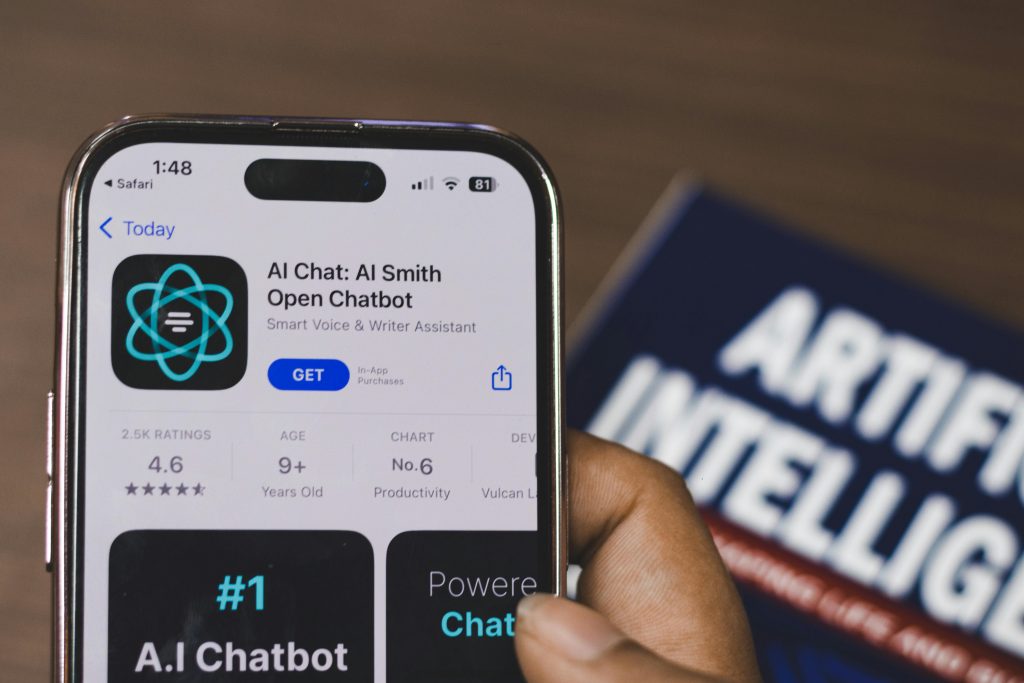The business landscape in fall 2025 is undergoing rapid transformation driven by AI innovation, experiential retail, digital platforms, and inclusive consumer experiences. From AI-powered customer service to immersive luxury boutiques and government-backed cryptocurrencies, the pace of change is accelerating. Companies that adapt early to these business trends 2025 will position themselves as industry leaders, while those that lag risk losing market relevance.
This article highlights 20 of the most powerful business and AI business trends for 2025, providing in-depth analysis, practical opportunities, and insights for application across industries. Whether you’re an entrepreneur, corporate strategist, or investor, these trends reveal where the future of business is heading and how to capture value in the coming years.
1. Mastering AI Adaptability Courses
Courses that simplify AI for non-technical professionals open an enormous market for corporate training. Companies can integrate such modules into employee development programs to upskill staff without hiring new technical talent. This democratizes AI knowledge, enabling marketing managers, HR leaders, and financial analysts to directly apply AI tools. For businesses, adopting such courses early ensures competitiveness in industries where AI literacy is becoming a baseline requirement.
2. Digital Licensing Platforms
Regulatory bodies digitizing licensing processes will streamline compliance for industries like insurance, finance, and healthcare. Companies can reduce administrative overhead while ensuring faster onboarding of licensed professionals. Businesses that adopt these platforms early can speed up recruitment cycles and regulatory approvals. This also signals opportunities for startups to provide API-based compliance integrations into HR and workflow software.
3. AI Centers of Excellence (Singapore)
Regional hubs for AI research act as magnets for talent, capital, and partnerships. For U.S. companies, partnering with or establishing similar centers enhances global reach and accelerates product development cycles. These hubs foster collaboration between academia, startups, and enterprises—speeding up commercialization of AI breakthroughs. They also provide multinational corporations with strategic testing grounds for new AI products.
4. AI-Powered Customer Service Tools
Voice-based AI like Maven Voice allows companies to deliver 24/7 support with human-like interactions. This reduces costs compared to traditional call centers while improving customer satisfaction through natural conversation flows. Businesses can deploy these systems to handle FAQs, order tracking, or technical troubleshooting, leaving humans to manage complex cases. The opportunity lies in industries with high customer contact volume—retail, telecom, and banking.
5. AI-Powered B2B Commerce Agents
AI agents like Alibaba’s Accio automate procurement, negotiations, and logistics in B2B commerce. This reduces inefficiencies, speeds up order cycles, and ensures optimized pricing. For U.S. import/export companies, deploying similar agents creates competitive advantages in sourcing and distribution. Firms that integrate such tools can manage supplier relationships more strategically, with less manual oversight.
6. AI-Enabled Next-Gen Audio Products
AI-driven audio devices personalize listening by adapting to environment, preferences, or even health data. This trend creates space for wellness applications (e.g., adaptive meditation soundscapes) and accessibility solutions for the hearing-impaired. Hardware makers can build subscription services around these devices, offering premium AI-based audio experiences. For creators, integration with AI means new ways to distribute contextual content.
7. AI Digital Twin Applications (Healthcare)
Digital twins model patient health, predicting outcomes and enabling preventative interventions. Hospitals and insurers benefit by lowering treatment costs and improving patient outcomes through early detection. Businesses in med-tech can partner with providers to license digital twin platforms or integrate them with wearables. For pharmaceutical firms, these twins can simulate treatment effectiveness before clinical trials, speeding innovation.
8. AI Agent Testing Platforms
As AI agents become more autonomous, businesses need to test how they interact safely. Platforms like Lambdatest provide sandbox environments to validate performance and reduce bias or failure risks. This becomes essential for industries with regulatory scrutiny such as finance or healthcare. Companies offering “AI quality assurance as a service” will see growing demand, much like cybersecurity testing expanded in the past decade.
9. Subscription-Based Printing Services
Models like Epson’s ReadyPrint illustrate how hardware companies turn into service providers. Subscriptions ensure steady revenue for vendors while giving customers predictable costs. SMEs, schools, and freelancers benefit from automatic ink supply and maintenance. This trend signals opportunities for other traditional hardware categories—like office furniture or appliances—to adopt similar recurring-revenue models.
10. Digitally Enhanced Shopping Experiences
Immersive retail spaces like Ray-Ban’s Montreal store set new standards for customer engagement. Shoppers expect augmented reality (AR) try-ons, personalized recommendations, and connected in-store experiences. Retailers can integrate data from online behavior to create seamless offline journeys. For luxury and lifestyle brands, this approach increases dwell time, upselling potential, and brand loyalty.
11. Hyper-Personalized Homepages
Saks’ tailored homepages demonstrate how AI and behavioral analytics optimize eCommerce. Customers are more likely to convert when greeted with offers aligned with browsing history and real-time intent. Retailers can apply this by leveraging machine learning models to serve product suggestions dynamically. In practice, this reduces bounce rates and increases lifetime customer value across digital platforms.
12. Immersive Luxury Retail Concepts
Experiential luxury boutiques move beyond selling products to curating lifestyle moments. Dior’s concept creates emotional connections and strengthens brand storytelling. High-end retailers can integrate art, fragrance, and sensory installations to elevate value perception. The U.S. luxury market can leverage this trend to differentiate from mass-market eCommerce and foster exclusive, high-margin relationships.
13. Flagship Spa-Equipped Fashion Retail
Merging wellness with retail reflects consumers’ growing interest in holistic lifestyles. Dior’s spa-fashion concept encourages longer in-store visits, positioning the brand as part of customers’ self-care routine. For retailers, this opens opportunities for cross-selling wellness products and services. Other brands can replicate this by incorporating cafes, yoga studios, or wellness lounges within their flagship spaces.
14. Human-Centric Pet Retail Experiences
Petco’s human-oriented pet products capitalize on emotional branding. By connecting pet products to owner identity, retailers strengthen loyalty and open premium pricing opportunities. This trend reflects broader consumer demand for products that reflect values and relationships. Businesses can explore custom or co-branded pet-human products, merging fashion, wellness, and tech into pet care.
15. Group-Centric Social Media Platforms
Chatter Social emphasizes community-driven interactions, countering fatigue from mainstream social media. This opens opportunities for niche platforms around hobbies, professions, or local groups. For marketers, group-centric networks provide highly targeted engagement opportunities with authentic communities. Brands that join early can shape discourse and establish credibility within tightly knit audiences.
16. K-POP Star Beverage Collaborations
Celebrity-driven collabs like Gong cha with Felix tap into fan culture to create viral demand. For beverage and CPG brands, leveraging fandoms ensures organic social amplification and rapid sell-outs. This model can be replicated across industries, from fashion to food tech. Businesses should consider limited editions, exclusive packaging, or fan-vote campaigns to maximize engagement.
17. Government-Issued Cryptocurrencies
Wyoming’s stablecoin is a milestone for state-level finance, blending blockchain with public trust. If replicated across states, this could disrupt banking, payments, and cross-border remittances. Businesses can prepare by exploring stablecoin payment integrations and treasury management solutions. For fintech startups, partnerships with local governments could unlock new compliance-driven opportunities.
18. Accessible Tourism Training Programs
Tourism inclusivity programs elevate accessibility as a competitive differentiator. Travel agencies, hotels, and destinations adopting such training appeal to a broader market—including aging populations and travelers with disabilities. Businesses can integrate accessible design principles into booking systems, tours, and experiences. Beyond compliance, accessibility becomes a driver of brand reputation and customer loyalty.
19. Online Coffee Subscriptions
Models like Trade Coffee capitalize on convenience, discovery, and specialty sourcing. Consumers value curated experiences, creating long-term loyalty opportunities for subscription providers. Businesses can scale by adding personalization features (e.g., taste profiling quizzes) and tiered membership perks. This trend can extend to other artisanal categories—tea, craft beer, or wellness supplements.
20. Speedy eCommerce Produce Deliveries
Amazon’s fresh-produce same-day delivery raises industry standards for logistics. Retailers must adapt to tighter delivery expectations by investing in local fulfillment centers or third-party partnerships. For smaller grocers, collaborating with platforms like Instacart may be essential to remain competitive. The opportunity lies in hybrid models—combining physical retail with tech-enabled rapid delivery to balance convenience and freshness.
FAQs
1. What are the most important business trends 2025?
AI integration, experiential retail, digital subscription models, and inclusive consumer experiences are among the most influential.
2. How can small businesses benefit from these trends?
By adopting AI-powered tools, subscription models, and personalization strategies, SMEs can compete effectively with larger players.
3. Are government-backed cryptocurrencies reliable for businesses?
They provide opportunities for faster payments and regulatory transparency, but adoption will require cautious treasury management.
4. Which sectors will AI disrupt most in 2025?
Healthcare, retail, finance, and B2B commerce will see the deepest AI-driven transformation.
Conclusion
The business and AI business trends 2025 reflect a clear trajectory toward adaptability, personalization, and inclusivity. Companies that embrace these innovations will unlock new revenue streams, deepen customer relationships, and future-proof operations. Whether it’s through AI digital twins in healthcare, immersive luxury retail, or rapid grocery delivery models, the opportunities span industries and geographies.
For leaders, the next step is clear: identify the trends most relevant to your market, test them early, and scale fast. The future of business in 2025 belongs to organizations ready to combine technology, human-centric design, and strategic foresight.



